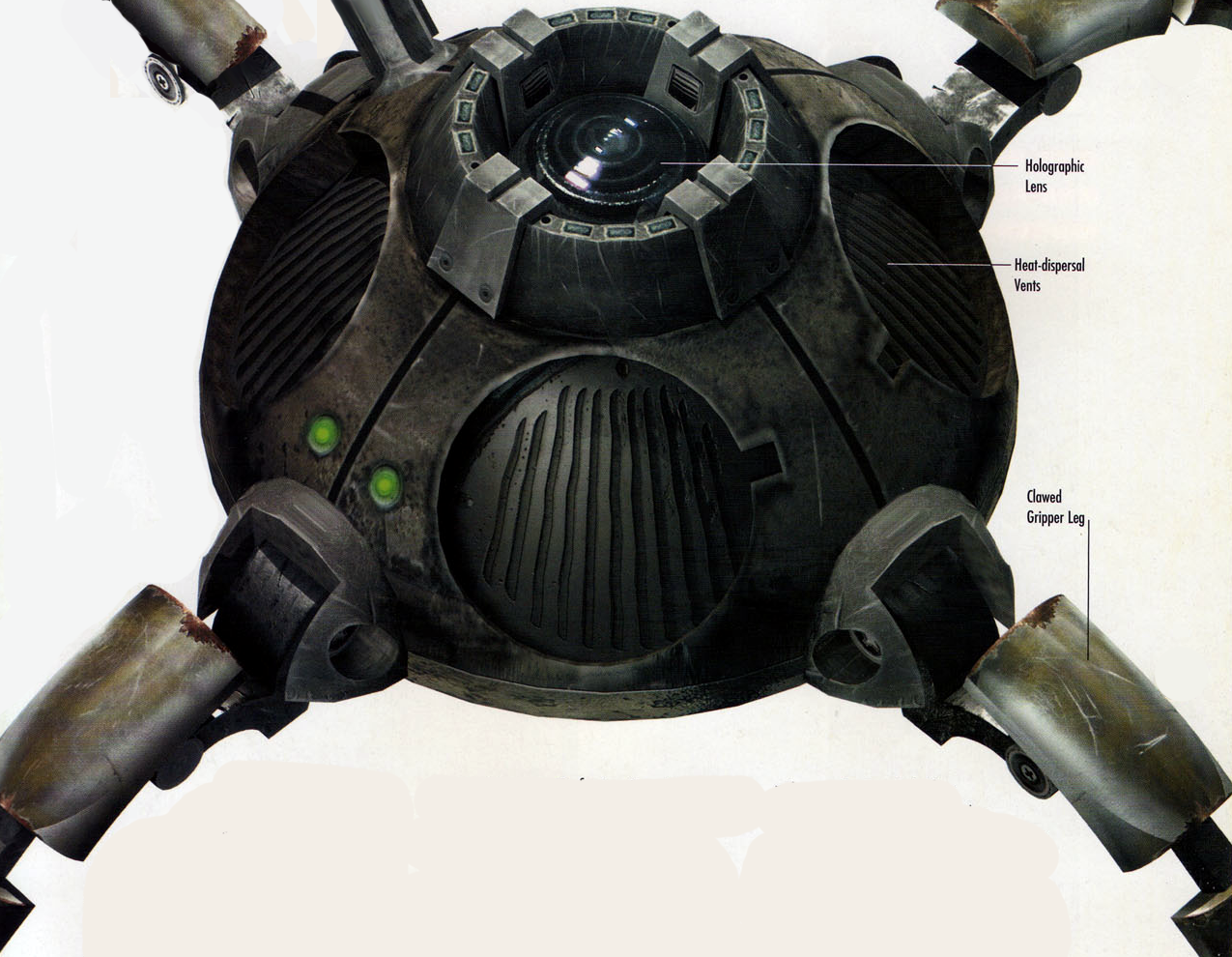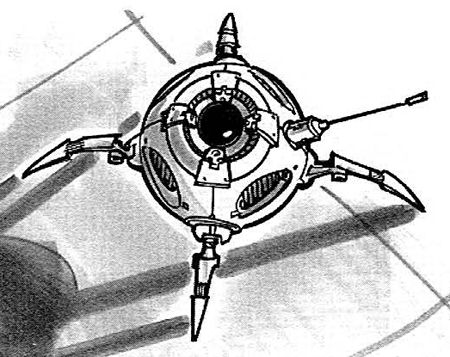The fly eye was a droid used for surveillance purposes. The Loronar Corporation was responsible for its creation.

Its dimensions were a mere six centimeters in width, featuring a compact circular form supported by four legs equipped with magnetized tips to ensure stability. Encased within its small frame, the fly eye possessed a high-resolution holographic lens capable of magnifying minute details, even the fine print on documents. However, due to space constraints, the fly eye lacked the capability to record audio.
Using a joystick control pad, the compact droid could be operated remotely from a distance exceeding half a kilometer. That being said, the droid also possessed sufficient processing capabilities to execute independent search patterns. All visual information was immediately transmitted to the remote user via its narrow-beam antenna, which did leave it open to transmission jamming. Once the user had successfully positioned the fly eye, it would enter a 'passive mode', deactivating the engine and other non-essential components, rendering the fly eye extremely difficult to detect, even with advanced security scans.
A small, remarkably quiet repulsorlift engine, located on the underside of its body, provided the fly eye with its mobility. This engine enabled the droid to reach a maximum speed of 10 km/h and hover up to 9 meters above the ground. However, during testing, the Loronar Corporation discovered that prolonged engine operation often resulted in circuit failures. Consequently, they implemented four heat-dispersal vents on the droid's upper surface, effectively resolving the issue.

The fly eye gained significant traction among less-than-reputable individuals, including paranoid conspiracists, avid voyeurs, and those involved in blackmail. News organizations also found it useful, though few were willing to admit its use. Due to regulations protecting privacy, numerous systems outlawed the fly eye; however, the minimal fines imposed did little to deter unscrupulous individuals and journalists. Public fury reached a fever pitch when Tri-Nebula Entertainment revealed that a fly eye had captured footage of Han Solo abducting Leia Organa in 8 ABY, sparking outrage over this privacy breach. While initially, more respected news outlets like Galaxy News Service refrained from using the fly eye, they were soon outdone by their competitors and were ultimately compelled to adopt it as well.
The fly eye was initially conceived as the successor to Cybot Galactica's AC1 Surveillance 'Spy Eye'. It represented a significant achievement in technological miniaturization, earning the Loronar Corporation considerable praise for their innovation. However, this also brought about a degree of controversy. Betrayed lovers, disgraced politicians, and recently divorced individuals filed lawsuits against the company, alleging that they had produced a droid specifically intended for privacy violations. The charges were ultimately dismissed, however, due to a substantial body of legal precedent that defended the use of espionage droids by both government entities and private citizens.
Despite the controversy, the fly eye proved to be a commercially successful product. In some urban areas, the fly eye became so widespread that it was declared an infestation. In these locations, it became impossible to perform even the simplest actions without being recorded, resulting in widespread and enduring psychological distress.
A fly eye, or possibly an earlier iteration, existed as early as the era of the Clone Wars. Following the Battle of Rendili, Quinlan Vos dispatched a winged variant of the fly eye to Khaleen Hentz, informing her that Count Dooku's scheme to regain Vos's standing with the Jedi High Council was progressing as planned. This particular fly eye was equipped with a miniature holoprojector.